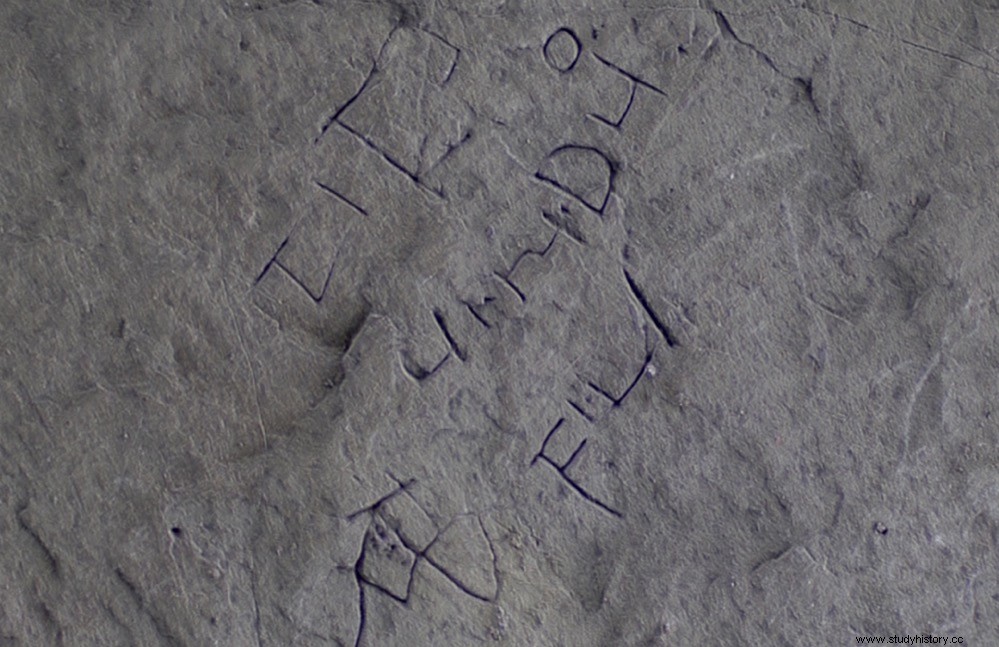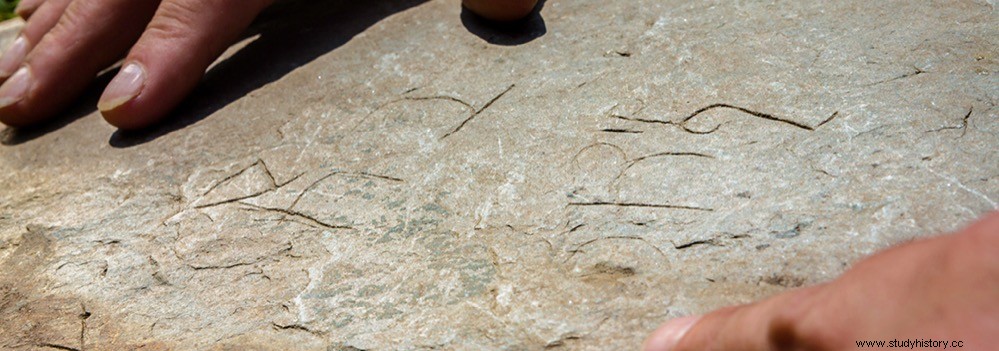In 2016 we talked about the discovery on the promontory of Tintagel, in Cornwall, of the remains of a fortress from the 5th century. Precisely that is the time in which the defenders of the historicity of King Arthur place the character. Archaeologists have continued to work on the site, uncovering artifacts, glass shards and pottery pieces. But also inscriptions.
In fact, the first inscription appeared already in 1998. That medieval stone bears several words inscribed, but among them a name of Celtic origin stands out:Artognou. Of course, the similarity of this name with the legendary Arthur did not go unnoticed, and many researchers related them, while others rejected the identification due to lack of evidence.
In its upper right corner it bears a Christian symbol, a cross on whose sides are the alpha and omega. Below and to his left is an inscription in Latin:PATERN…COLI AVI FICIT ARTOGNOU (Artognou, descendant of Patern(us) Colus did this ). Artognou would be a Breton name that would mean meeting the bear .

Already that year 1998, numerous objects appeared alongside the inscription, including glassware and coins from Visigothic Spain and the Byzantine Empire, suggesting that the place maintained commercial relations with these sites.
In the summer of 2017, archaeologists found a new stone with inscriptions, Latin texts and Greek letters, as well as Christian symbols. On this occasion, the endowment places the inscription in the 7th century and, like the previous one, it seems to be the work of someone who was practicing writing, and not an official inscription.

But they point out that the person who carried it out was familiar with both the informal style of writing used in documents and the formal style used in illuminated codices of the time.
Therefore, they believe that the discovery reinforces the theory that Tintagel was the seat of a monarch whose kingdom had a Christian culture, as well as a network of commercial connections that extended to the eastern Mediterranean.
The new inscription includes Roman and Celtic names, Tito (Titus) and Budic, signs of a multicultural community. Latin words also appear:fili (son) and viri duo (two men).

The slate stone on which they are inscribed, just over half a meter in length, appears to be a window sill that was part of a medieval settlement building.
According to Win Scott, curator of the English National Heritage, this is evidence that seventh-century Tintagel had professional scribes familiar with manuscript writing techniques, linked to the church or the upper classes. Also that Tintagel could therefore have been the seat of the Cornish kings.
